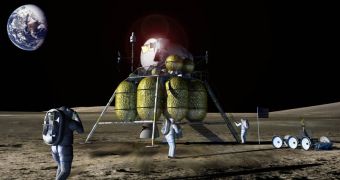On Thursday, Obama released the proposed budget for 2010, and the good news for space fans is that it features sufficient funds for NASA to push ahead with its scheduled return to the Moon by 2020. The new president apparently continues Bush's line of policy as far as space exploration goes, and he even adds some funds for the American space agency. There are, however, numerous things that need to go well in order for the deadline to be respected, including the full development of the Constellation and the ARES V projects. If they are finished on time, then man could even reach Mars by 2030 to 2040.
The new plan also upholds Bush's proposal of retiring the space shuttles by 2010, even though critics of this line of policy say that there's still life left in the crafts. None of them has even reached half of their projected life span, having been deployed in less than 50 missions each. But Obama advocates progress, in that the delivery and transport systems that are currently planned at NASA will do a much better job at carrying larger payloads and more astronauts into orbit.
“The budget doesn't say a whole lot about any specific system. I wouldn't interpret the absence of the words 'Constellation,' 'Ares,' and 'Orion' one way or another. That's really up to the the new management team, when it gets there,” analyst John Logsdon reveals from Washington DC National Air and Space Museum space. “The direction we have at the current time is, 'Proceed as you were,'” NASA spokeswoman Stephanie Schierholz adds.
One of the main problems still to be resolved with NASA's new direction is the path the agency is to take, as far as rocket development goes. Some argue that the existing delivery systems, including the Delta IV and the Atlas V, are more than equipped to carry every piece of material needed to orbit and beyond, while others advocate the necessity of new designs, such as the ARES V, being developed. One of the many limitations that current rockets have is the size of telescope lenses that they can carry to space-based observers. The new ARES V will be able to sustain much larger ones, meaning that astronomy could accelerate its progress very fast.
In addition to its exploration plans, the agency will also continue its Earth surveillance programs, including the monitoring of greenhouse gases, the Arctic and the Antarctic, and other similar missions. However, the budget plans for these segments are not yet ready, and analysts expect them to emerge by April at the earliest.

 14 DAY TRIAL //
14 DAY TRIAL //